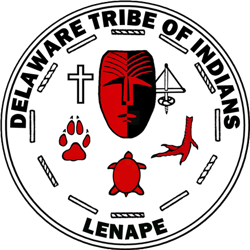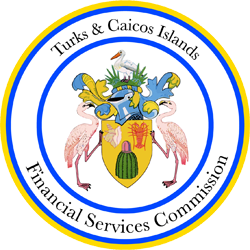

Domiciles
We regularly form reinsurance companies in the Delaware Tribe of Indians and the Turks & Caicos Islands, although we are happy to evaluate other domiciles as the needs of clients dictate. Please see below for details and history on the Delaware Tribe of Indians and the Turks & Caicos Islands, and don't hesitate to contact us with any questions you might have.
Delaware Tribe of Indians


The Tribal Domicile is the first viable, economically-feasible domestic alternative to traditional offshore domiciles for reinsurers owned by vehicle dealers, agents, and other specialized producers, such as rent-to-own stores. They refer them as ARCs (allied reinsurance companies).
By bringing these programs back within the borders of the U.S., The Tribal Domicile has eliminated the need for a §953(d) election and addressed many challenges, including attempting to open a U.S. bank account that is owned by a foreign entity.
In 2012 the Delaware Tribe of Indians (the Tribe) decided to become an insurance domicile and performed the initial investigations to make it happen. The Tribe created a government unit, Delaware Tribal Financial Services, and charged it with creating a limited and specialized insurance domicile ("The Tribal Domicile”), targeting primarily the insurance-reinsurance-obligor facilities needed by vehicle dealerships and other specialized producers. Enabling legislation, initial regulations and rules, and costs appropriate for those markets were adopted. That program is up and running and has several approved formations.
During 2013 The Tribal Domicile has had discussions with industry participants in these specialized markets. They appreciate all of the insight that the industry has shared with them about the necessity for a strong, focused domicile, with clear readable laws and regulations, delivered at reasonable fees.
They have now developed and adopted revised specialized laws and regulations targeting this market and addressing the industry objectives.
Tribal Sovereignty
Tribal sovereignty in the U.S refers to the inherent authority of indigenous tribes (Native Americans or Indians) to govern themselves within the borders of the U.S. The federal government recognizes tribal nations as "domestic dependent nations" and has established a number of laws attempting to clarify the relationship between the federal, state, and tribal governments. The Constitution and, later, federal laws grant local sovereignty to tribal nations, yet do not grant full sovereignty equivalent to foreign nations, hence the term "domestic dependent nations." This limitation to tribal nations’ sovereignty became federal law in 1832 after a U.S. Supreme Court opinion delivered by Chief Justice John Marshall in the case of Worcester v. Georgia.
Treaty with the Delawares
The "Treaty with the Delawares" was signed on September 17, 1778. Under the treaty, the United States recognized the Delaware Nation's sovereignty. The 2013 U.S. Mint Native American coin commemorates this treaty.
Tribal Sovereignty and the Constitution
The U.S. Constitution specifically mentions the relationship between the U.S. federal government and Native American tribes three times:
These basic provisions have been changed and/or clarified by various federal laws over time.Regulate, historically, means facilitate. (Black’s Law Dictionary) Therefore, Congress was to be the facilitator of commerce between the states and the tribes.
Tribes and the Federal Government
At the foundation of the constitutional status of tribes is the idea that tribes have an inherent right to govern themselves—the power is not delegated by congressional acts. Congress can, however, limit tribal sovereignty. Unless a treaty or federal statute removes a power, however, the tribe is assumed to possess it. (Light, Steven Andrew, and Kathryn R.L. Rand. Indian Gaming and Tribal Sovereignty: The Casino Compromise. University Press of Kansas, 2005). Current federal policy in the U.S. recognizes this sovereignty and stresses the government-to-government relations between Washington, D.C. and the American Indian tribes. (The White House, Office of the Press Secretary. (2004). Government-to-Government Relationship with Tribal Governments. [Press release]) However, most Indian land is held in trust by the U.S., and federal law still regulates the political and economic rights of tribal governments.
The federal government has always been the entity that makes treaties with Indian tribes - not the states. As stated previously, the U.S. Constitution, Article 1, Section 8 states that Congress has the power to regulate commerce with Indian tribes. Indian tribes are separate from the federal or state governments, and the states do not have power to regulate commerce with the tribes, much less regulate the tribes. (American Indian Policy Center, 2005. St. Paul, MN. 4 Oct. 2008) While federally recognized tribes generally are not subordinate to states, they can have a government-to-government relationship with these other sovereigns, as well. For more information, see: The Tribal Domicile web site.
Turks & Caicos Islands


Early inhabitants of the islands were Amerindians, including the Arawak people, who were, over the centuries, gradually replaced by the Caribs. The first documented European to sight the islands was Spanish conquistador Juan Ponce de León, who did so in 1512. During the 16th, 17th, and 18th centuries, the islands passed from Spanish, to French, to British control, but none of the three powers ever established any settlements.
For several decades around the turn of the 18th century, they became popular pirate hideouts. Bermudian salt collectors settled the Turk Islands around 1680. In 1765–1783 they were under French occupation. After the American Revolution (1775–1783) many loyalists fled to Caribbean colonies, including (in 1783) the first settlers on the Caicos Islands; cotton became an important crop briefly. In 1799, both the Turks and the Caicos island groups were annexed by Britain as part of the Bahamas.
In 1841 the Trouvadore, a Spanish ship engaged in the slave trade, wrecked off the coast of East Caicos, one of the larger Caicos Islands. One hundred and ninety-two captive African Blacks survived the sinking and made it to shore where, under British rule, the slave trade was illegal. These survivors were apprenticed to trades for one year then settled mostly on Grand Turk Island. An 1878 letter documents the "Trouvadore Africans" and their descendants as constituting an essential part of the "labouring population" on the islands. In 2004 marine archaeologists rediscovered a wreck, called the "Black Rock Ship," that subsequent research has suggested may be that of the Trouvadore. This suggestion was further supported when a marine archaeology expedition funded by NOAA in November of 2008 confirmed that the wreck comprises artifacts whose time of manufacture and style support the association of this wreck with that of the Trouvadore. The wreckage has, however, not been identified with absolute certainty.
In 1848 the Turks and Caicos were declared a separate colony under a council president. The last incumbent was maintained in 1873 when the islands were made part of Jamaica colony; in 1894 the chief colonial official was restyled commissioner. In 1917, Canadian Prime Minister Robert Borden suggested that the Turks and Caicos join Canada, but this suggestion was shot down by British prime minister David Lloyd George. The islands remained a dependency of Jamaica until 1959.
On 4 July 1959, the islands were again a separate colony, the last commissioner being restyled administrator, but the governor of Jamaica remained the governor of the islands. Until 31 May 1962, they were one of the constitutive parts of the Federation of the West Indies.
When Jamaica was granted independence from Britain in August 1962, the Turks and Caicos Islands became a crown colony. From 1965, the governor of the Bahamas was also governor of the Turks and Caicos Islands and oversaw affairs for the islands. When the Bahamas gained independence in 1973, the Turks and Caicos received their own governor (the last administrator was restyled). In 1974, Canadian New Democratic Party MP Max Saltsman tried to use his Private Member's Bill to create legislation to annex the islands to Canada, but it didn't pass in the Canadian House of Commons.
The islands have had their own government headed by a chief minister since August 1976. In 1979, independence was agreed upon in principle for 1982, but a change in government caused a policy reversal, and they instead approached the Canadian government to discuss a possible union, but at the time the Canadian Government was embroiled in a debate over free trade with the U.S., and little attention was paid to the suggestion. The islands' political troubles in recent years have resulted in a rewritten constitution promulgated in 2006.
The two island groups are in the North Atlantic Ocean, southeast of the Bahamas, north of Hispaniola, and about 600 miles (970 km) from Miami in the United States. The territory is geographically contiguous to the Bahamas, but is politically a separate entity. The Caicos Islands are separated by the Caicos Passage from the closest Bahamian islands, Mayaguana and Great Inagua. The eight main islands and more than 20 smaller islands have a total land area of 238.0 square miles (616.4 km2), primarily of low, flat limestone with extensive marshes and mangrove swamps and 230 miles (370 km) of beach front. The weather is usually sunny and relatively dry, but suffers frequent hurricanes. The islands have limited natural fresh water resources; private cisterns collect rainwater for drinking. The primary natural resources are spiny lobster, conch and other shellfish. The two distinct island groups are separated by the Turks Passage.
The Caicos Islands are the larger group, with almost 96 percent of the land area (589.5 km2/227.6 sq mi) and 82 percent of the population (26,584 out of a total of 33,302 in 2006). The spatial arrangement of the islands around the large Caicos Bank (with an area of 7,680 km2/2,970 sq mi) resembles an atoll, with the six large islands in the west, north and east, and a few tiny reefs and cays in the south. The unofficial capital of the Caicos Islands is the village of Kew on North Caicos. There is no official capital because the island group is not an administrative unit. The Caicos Islands encompass four of the six administrative districts of the territory. Four of the six main islands are inhabited, plus two of the smaller islands.
The Financial Services Commission
The Commission is an independent statutory body tasked with the supervision of the financial services sector. The Commission, which is also responsible for the oversight of company formation and registration, is accountable for its performance to the Governor of the Turks & Caicos Islands.
The Commission was established under the Financial Services Commission Ordinance 2001 and continued by the Financial Services Commission Ordinance 2007 to regulate the financial services industry.
The legislation applicable to each particular area of the Commission’s responsibility is located in the area of the website dedicated to that type of business activity.
For more information, see: The Turks & Caicos Islands Financial Services Commission web site.
© 1981- Gerald B. Farlow & Associates, Ltd.
All rights reserved.